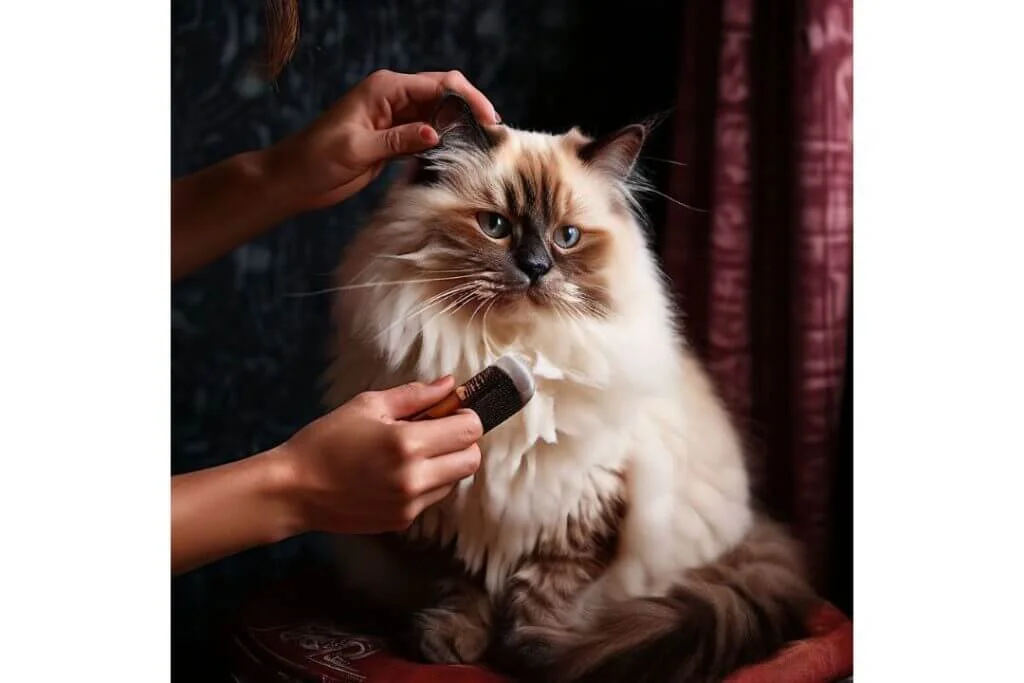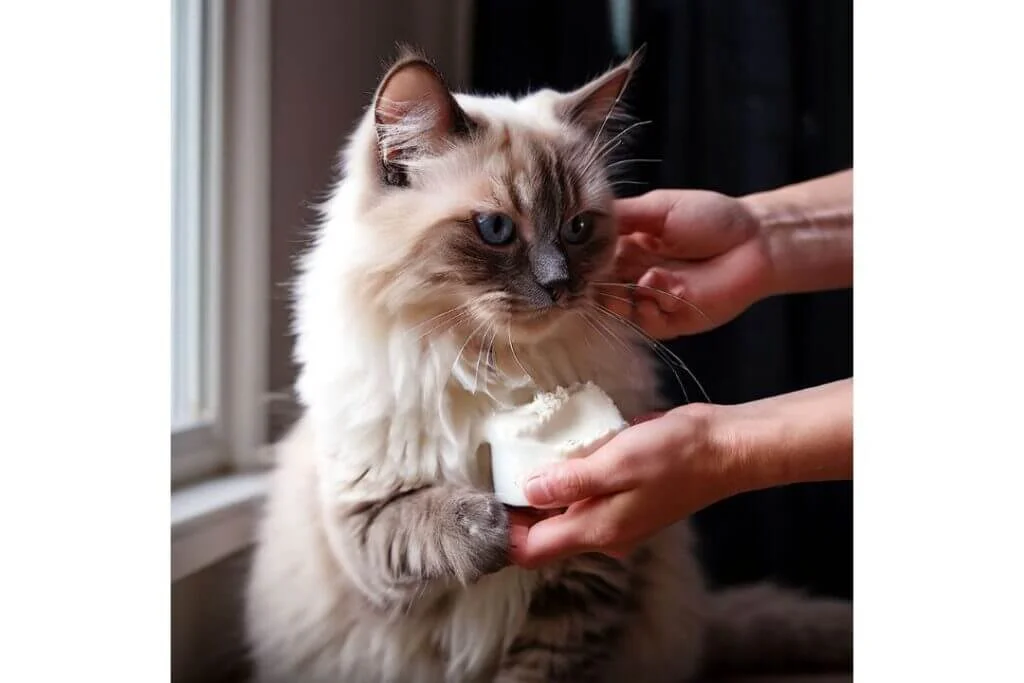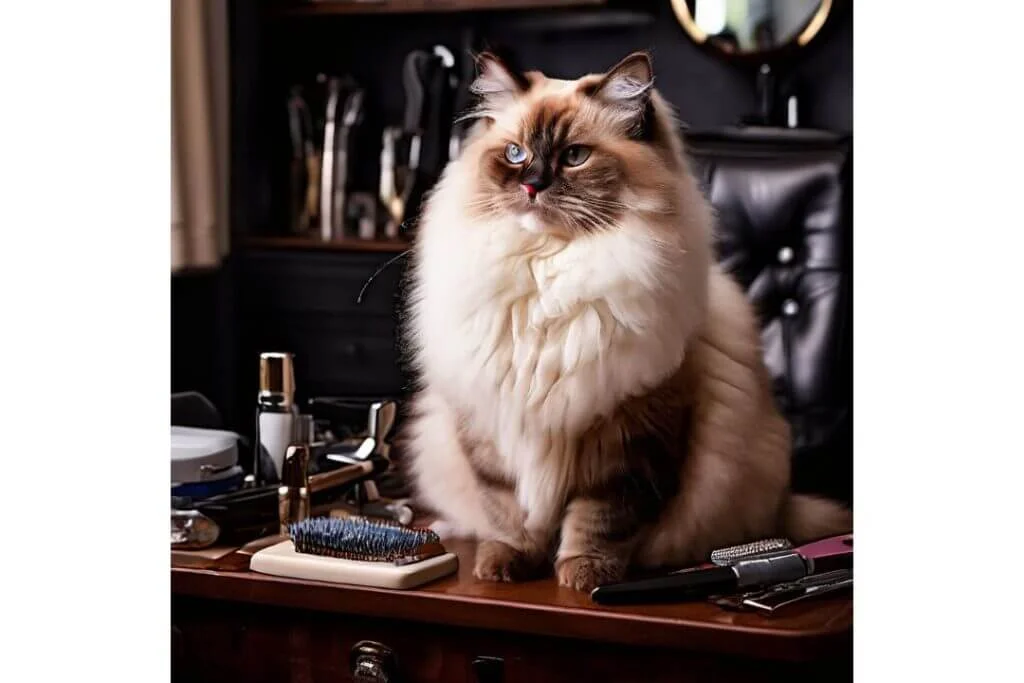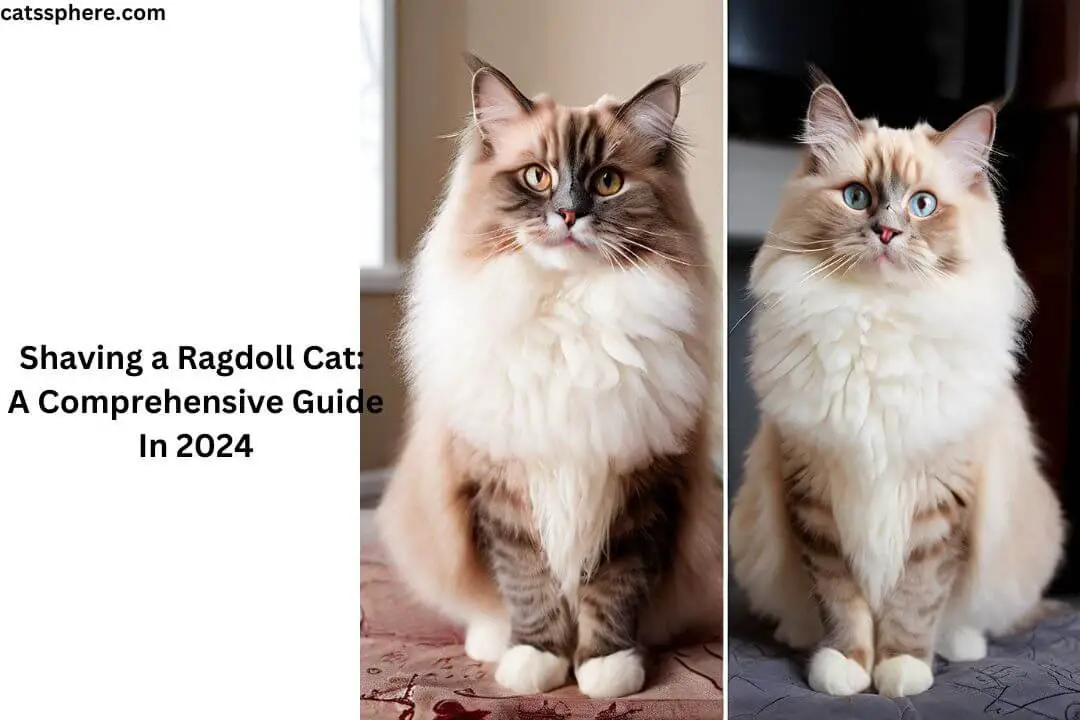Introduction
Grooming your Ragdoll cat is essential for maintaining its health and happiness. While these fluffy felines are known for their luxurious coats, there are times when shaving might be necessary. In this detailed guide, we’ll explore everything you need to know about shaving a Ragdoll cat, from the reasons behind it to the best practices for ensuring a safe and comfortable experience.
Understanding Ragdoll Cats
Characteristics of Ragdoll Cats
Ragdoll cats are known for their striking blue eyes, silky fur, and affectionate nature. They are large, with males typically weighing between 15 to 20 pounds and females ranging from 10 to 15 pounds. Their semi-longhair coats, while beautiful, require regular maintenance to prevent matting and tangling.
Common Grooming Needs
Ragdolls have a double coat that can easily become matted if not properly cared for. Regular brushing, typically two to three times a week, helps to keep their fur in good condition. However, even with diligent grooming, some situations may call for more drastic measures, such as shaving.
When to Consider Shaving Your Ragdoll Cat
Health Issues
Shaving might be necessary if your Ragdoll is suffering from certain health issues. Skin conditions, parasites, or infections can necessitate a closer shave to allow for better treatment and monitoring.
Severe Matting
Despite regular grooming, Ragdolls can develop severe mats, especially in areas like the armpits, belly, and behind the ears. When brushing and detangling no longer work, shaving can provide relief and prevent further discomfort.
Temperature Control
In hotter climates, a thick coat can cause overheating. Shaving your Ragdoll can help keep them cool and comfortable during sweltering summer months.
Preparing for the Shaving Process
Gathering Supplies
Before you begin, ensure you have all the necessary supplies. You’ll need a high-quality pair of clippers designed for pet grooming, a brush, comb, pet-safe shampoo, towels, and some treats to reward your cat.
Creating a Calm Environment
Cats are sensitive creatures, and the shaving process can be stressful. Choose a quiet, calm environment where your cat feels safe. Having a helper can make the process smoother, as one person can hold and comfort the cat while the other does the shaving.
Step-by-Step Guide to Shaving a Ragdoll Cat
Brushing and Detangling

Start by thoroughly brushing your cat to remove any loose fur and minor tangles. This will make the shaving process easier and more comfortable for your cat.
Bathing Your Cat
Next, bathe your Ragdoll using a pet-safe shampoo. This step is crucial to remove dirt and oils from the fur, ensuring the clippers glide smoothly.
Drying Thoroughly
After the bath, dry your cat thoroughly. You can use a towel and a pet dryer on a low setting. Make sure your cat is completely dry before you begin shaving to avoid any discomfort or skin issues.
Shaving Techniques
Choosing the Right Clippers
Invest in a good pair of pet grooming clippers. Human clippers are not suitable and can cause injury. Look for clippers specifically designed for pets, with multiple blade settings.
Safe Shaving Practices
Begin shaving in the direction of the hair growth to prevent irritation. Start from the neck and move towards the tail, being gentle and patient. Pay extra attention to sensitive areas like the belly and armpits.
Handling Common Issues During Shaving
Dealing with a Nervous Cat
If your cat becomes nervous or agitated, take breaks and offer treats. Patience is key. Speak in a soothing voice and pet your cat to help calm them.
Preventing Skin Irritation
To prevent skin irritation, ensure your clippers are sharp and clean. Dull blades can pull on the fur and irritate the skin.
Managing Nicks and Cuts
In case of any nicks or cuts, clean the area with antiseptic and monitor it closely. If the cut is severe, contact your veterinarian immediately.
Post-Shaving Care
Skin Care Tips

After shaving, your cat’s skin will be more exposed and sensitive. Apply a pet-safe moisturizer to keep the skin hydrated and prevent dryness.
Monitoring for Any Reactions
Keep an eye on your cat for any signs of irritation or allergic reactions. If you notice anything unusual, consult your veterinarian.
Keeping Your Cat Comfortable
Provide a soft, warm place for your cat to rest after shaving. They may feel a bit vulnerable without their coat, so extra comfort is important.
Alternatives to Shaving
Regular Brushing
To avoid the need for shaving, brush your Ragdoll regularly. This helps prevent mats and keeps their coat healthy.
Professional Grooming Services

If you’re unsure about shaving your cat yourself, consider professional grooming services. Groomers have the expertise and equipment to handle the process safely.
Hair Trimming
Instead of a full shave, consider trimming the hair in problem areas. This can help manage mats and tangles without the need for complete shaving.
10 Bad Things About Ragdoll Cats
Ragamuffin vs Ragdoll: A Detailed Comparison
Are Ragdoll Cats Cuddly? Discover Their Affectionate Nature
FAQs About Shaving Ragdoll Cats
Is Shaving Safe for All Cats?
Shaving is generally safe for most cats, but it may not be suitable for all felines. Cats with certain health conditions, sensitive skin, or a tendency to experience anxiety may not tolerate the process well. It’s crucial to assess each cat’s individual health and temperament before deciding to shave. Consulting with your veterinarian will help determine if shaving is a safe option for your particular cat, considering their medical history and current health status.
How Often Should You Shave a Ragdoll?
Shaving should only be done when absolutely necessary. Ragdolls typically have long, beautiful coats that require regular grooming to prevent mats and tangles. By maintaining a consistent grooming routine, such as daily brushing and regular baths, the need for shaving can be greatly reduced. However, if your Ragdoll develops severe mats, has difficulty grooming themselves due to age or illness, or needs to be shaved for medical reasons, you might need to consider shaving more frequently. Always explore less invasive grooming options first.
What Are the Risks of Shaving?
There are several risks associated with shaving cats, including skin irritation, nicks, cuts, and the potential for causing stress or trauma. Using improper equipment or techniques can increase the likelihood of these risks. It’s important to use high-quality, sharp grooming tools designed for cats and to follow safe shaving practices. Make sure your cat is calm and comfortable during the process to minimize the risk of injury. In some cases, sedation may be required, but this should only be administered by a veterinarian.
Can You Shave a Ragdoll at Home?
Yes, you can shave a Ragdoll at home, but it requires patience, the right tools, and a certain level of skill. Essential tools include a high-quality cat clipper, various clipper blades, scissors, and a comb. It’s crucial to have a quiet, calm environment and to work slowly and gently. If your cat becomes agitated or stressed, it’s best to stop and try again later or seek professional help. If you’re not confident in your ability to shave your cat safely, it’s advisable to consult a professional groomer or veterinarian.
Conclusion

Shaving a Ragdoll cat can be a challenging but sometimes necessary task. Whether it’s due to health issues, severe matting, or temperature control, understanding the proper techniques and precautions is essential to ensure your cat’s safety and comfort. Always prioritize your cat’s well-being and consult with professionals when in doubt. Professional groomers and veterinarians have the expertise to handle the process safely and effectively, minimizing stress and risk for your cat.
5 Unique FAQs After The Conclusion
Can Shaving a Ragdoll Cat Affect Their Behavior?
Yes, some cats may feel more vulnerable or stressed after being shaved. This can manifest in changes in behavior, such as hiding, increased aggression, or a decrease in appetite. To help ease these behavioral changes, provide your cat with extra comfort and reassurance. Creating a calm environment, offering their favorite treats, and spending extra time with them can help your cat adjust to their new appearance and feel more secure.
Will Shaving My Ragdoll Affect Their Fur Regrowth?
Typically, a Ragdoll’s fur will regrow after shaving, but the texture and pattern might change slightly. The new growth may initially appear uneven or patchy. Regular grooming during the regrowth phase can help maintain a healthy coat and ensure the fur grows back smoothly. It’s important to monitor the regrowth for any signs of skin irritation or abnormal changes and consult a veterinarian if you have any concerns.
What If My Cat Refuses to Be Shaved?
If your cat is extremely resistant to being shaved, it’s best to seek help from a professional groomer or veterinarian. Forcing a cat to undergo shaving can lead to injury for both the cat and the owner. Professionals have the experience, knowledge, and equipment to handle resistant cats safely and humanely. In some cases, sedation may be necessary, but this should only be performed by a veterinarian to ensure the safety and well-being of your cat.
Are There Specific Seasons When Shaving Is More Beneficial?
Shaving can be more beneficial during the summer months to help prevent overheating and to keep your cat cool. In contrast, during the winter, it’s generally better to maintain your Ragdoll’s full coat to provide warmth and protection against cold weather. If your cat lives in a particularly hot or humid climate, shaving may be considered more frequently. Always weigh the benefits against the potential stress and risks of shaving.
How Do I Choose the Right Groomer for My Ragdoll?
When choosing a groomer for your Ragdoll, it’s important to look for professionals with experience handling Ragdolls or other long-haired breeds. Researching and reading reviews from other pet owners can provide insights into the groomer’s reputation and quality of service. It’s also helpful to ask for recommendations from friends, family, or your veterinarian. When you find a potential groomer, don’t hesitate to ask about their experience, techniques, and approach to handling cats. A good groomer should be patient, gentle, and knowledgeable about the specific needs of Ragdolls.

